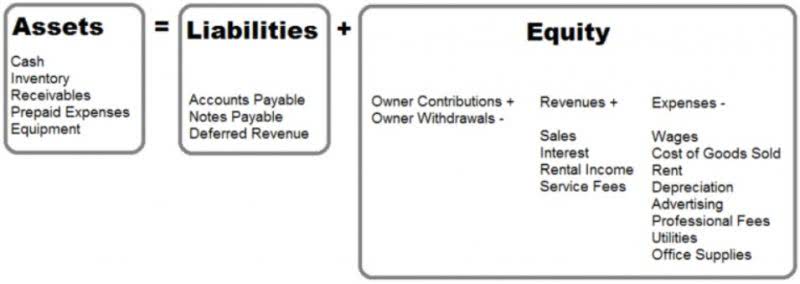Content

Compensation may factor into how and where products appear on our platform (and in what order). But since we generally make money when you find an offer you like and get, we try to show you offers we think are a good match for you. That’s why we provide features like your Approval Odds and savings estimates. Net income is also a relevant number for investors as it’s used to determine a company’s earnings per share . The net income from a small business is also used to calculate the owner’s self-employment tax (Social Security and Medicare taxes).

COGS or COS is deducted from the gross receipts of the business before calculating gross income. Once you have your fixed costs and variable expenses totaled, add gross vs net income the two amounts together to determine how much you’re spending every month. Take this total and subtract it from your total monthly net income or take-home pay.
Gross vs. Net Income for Self-Employed Taxpayers
The additional interest expense for servicing more debt could reduce net income despite the company’s successful sales and production efforts. Understanding the differences between gross profit vs. net income can help investors determine whether a company is earning a profit and, if not, where the company is losing money. You can sign up for Bankrate’s myMoney to categorize https://www.bookstime.com/articles/how-to-become-a-bookkeeper your spending transactions, identify ways to cut back and improve your financial health. If you receive an hourly wage, you can calculate your gross income by multiplying the number of hours worked in your payroll period by your hourly wage. It’s important to report all of your earned income when you file your income taxes, even side income not reported on Form 1099s.

Although net income is considered the gold standard for profitability, some investors use other measures, such as earnings before interest and taxes (EBIT). EBIT is important because it reflects a company’s profitability without the cost of debt or taxes, which would normally be included in net income. Typically, net income is synonymous with profit since it represents a company’s final measure of profitability. Net income is also called net profit since it represents the net profit remaining after all expenses and costs are subtracted from revenue. Gross income will almost always be higher than net income since gross profit has not accounted for various costs (e.g., taxes) and accounting charges (e.g., depreciation). For example, a company might increase its gross profit while borrowing too much.
Gross vs. Net Income for a Wage Earner
Gross income measures the total amount of revenue brought in via sales in a given period of time. Imagine a retail clothing store that sells $250,000 worth of clothes over the course of a quarter. That $250,000, before any expenses are deducted, is equal to the store’s gross income for that quarter. Now that we know the definitions of net vs gross income, we can compare the two.
- Gross profit helps to show how efficient a company is at generating profit from producing its goods and services.
- For example, an employee who makes $30,000 per year might have $9,000 withheld from their paychecks to pay income taxes, FICA taxes, and his or her share of employee benefits.
- Here, direct expenses include all those costs charged for producing and bringing goods into the present location and condition.
- Gross profit helps investors determine how much profit a company earns from producing and selling its goods and services.
- Understand how gross income and net income are defined in order to understand their key differences.
- Gross pay is noted on a pay stub and should reflect an employee’s salary or hourly wage, plus reimbursements, bonuses, commissions and overtime pay.
For example, a company in the manufacturing industry would likely have COGS listed. In contrast, a company in the service industry would not have COGS—instead, their costs might be listed under operating expenses. However, some companies might assign a portion of their fixed costs used in production and report it based on each unit produced—called absorption costing. For example, say a manufacturing plant produced 5,000 automobiles in one quarter, and the company paid $15,000 in rent for the building. Under absorption costing, $3 in costs would be assigned to each automobile produced. Gross income is the amount of money you earn before any taxes or other deductions are taken out.
Federal vs. State Income Taxes
If you receive SSDI and are still in your Trial Work Period (TWP), Social Security looks at your gross earnings to determine if you’ve used one of your TWP months. Gross income includes all of your income before any deductions are taken. For example, if you are working in a job in which you’re paid an hourly wage, your gross income is the hourly rate you’re paid multiplied by the number of hours you’ve worked during a pay period. Gross income or gross profit represents the revenue remaining after the costs of production have been subtracted from revenue. Gross income provides insight into how effectively a company generates profit from its production process and sales initiatives. It’s important to note that gross profit and net income are just two of the profitability metrics available to determine how well a company is performing.
In other words, this is the amount of income left over after all the costs of making the products have been accounted for. This does not take into account any selling and administrative expenses or taxes. Businesses use this to compute the amount of earnings that can be used to pay these operating costs. Gross pay will likely always be more than net pay because net pay includes deductions from gross pay. Gross is an employee’s total earnings, such as wages or salary, while net pay is their earnings minus payroll deductions, including taxes, benefits and garnishments.
Gross income is also good for business owners to gauge the effectiveness of their sales staff and set quotas and targets. But it doesn’t tell managers or owners whether they actually made or lost money over a given period of time. Gross income is a good metric for business owners to use for measuring their total sales and tracking over time.
- Jane works for a wildlife charity and her salary is $3,000 per month.
- This can occur if an employee defaults on a loan, has unpaid taxes or is required to pay child support or alimony.
- Comparing the net incomes of two different businesses doesn’t tell you much either, even if they are in the same industry.
- The higher your gross income, the higher your tax liability will be, depending on your marital status, deductions and other qualifying credits.
As an individual, gross income typically refers to your annual salary or how much you’re paid by your employer. So your gross income may be $75,000 if that’s what was agreed upon when you were hired. If it turns out that you paid more than you needed to, either through withholdings from your paycheck or estimated tax payments, you have two options. You can receive a refund for the difference or credit the amount to the following year’s tax bill.
Marginal vs. effective tax rate: What’s the difference?
Rental income is not earned income because of the source of the money. Instead, rental income is considered passive income with few exceptions. Let’s continue with our example of the retail store with $250,000 of sales over a particular quarter. Now, let’s say that the items the store sold cost a total of $115,000 to purchase (inventory cost). Let’s also say that the total cost of employee wages over that period is $25,000, rent and utility expenses totaled $15,000, and supplies and other miscellaneous expenses equaled $5,000.